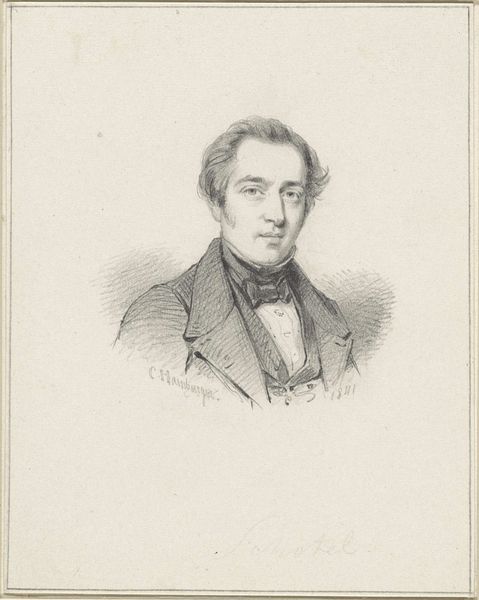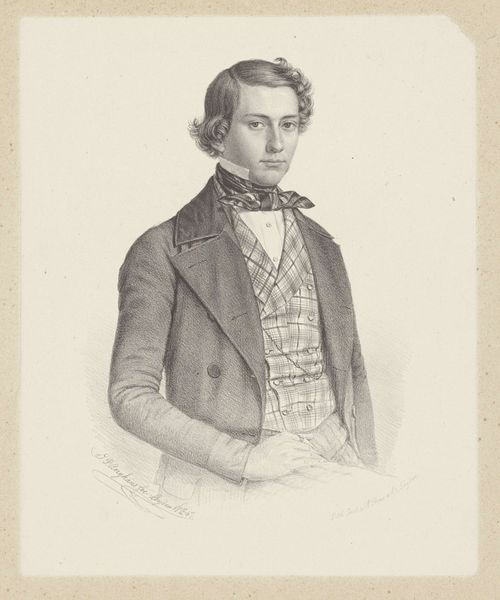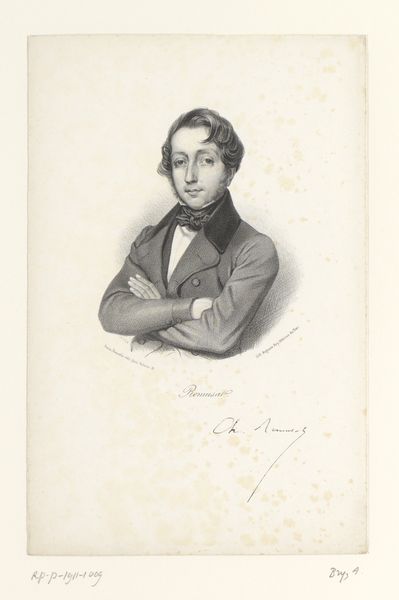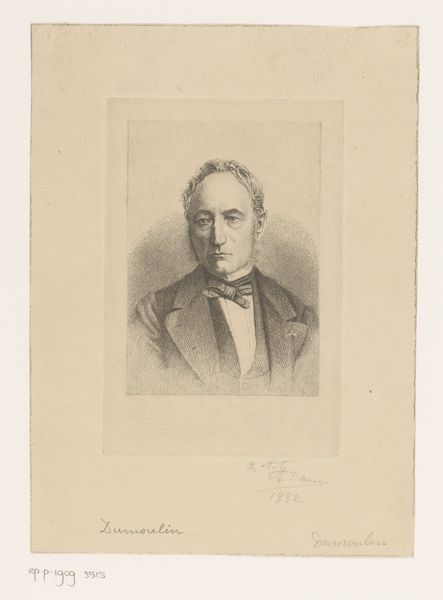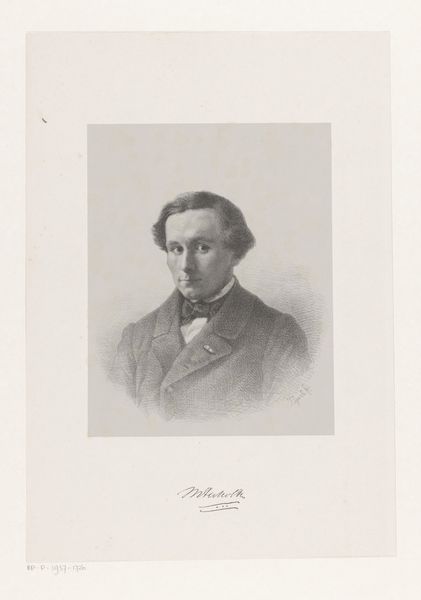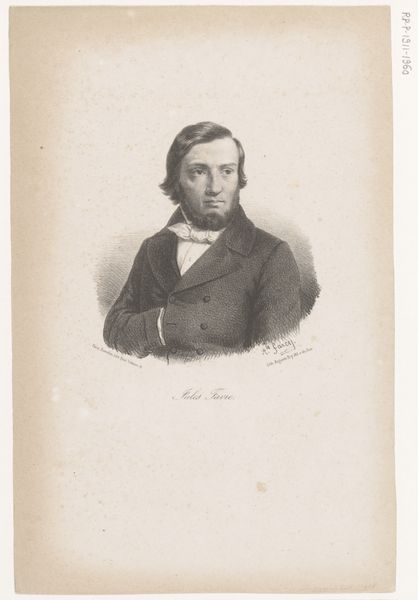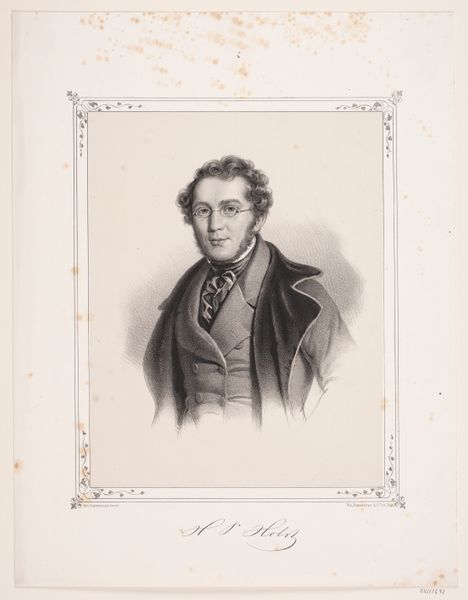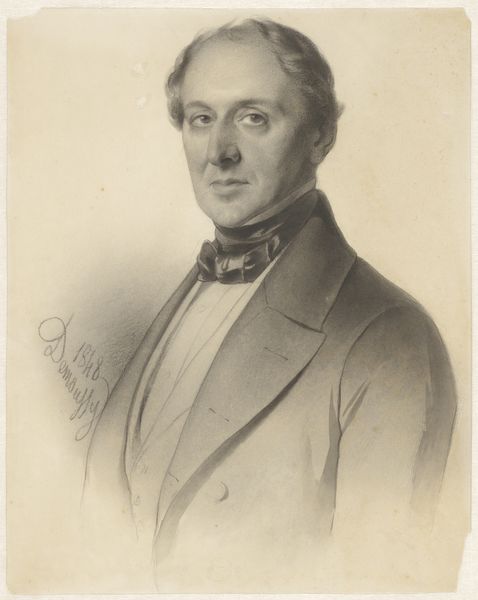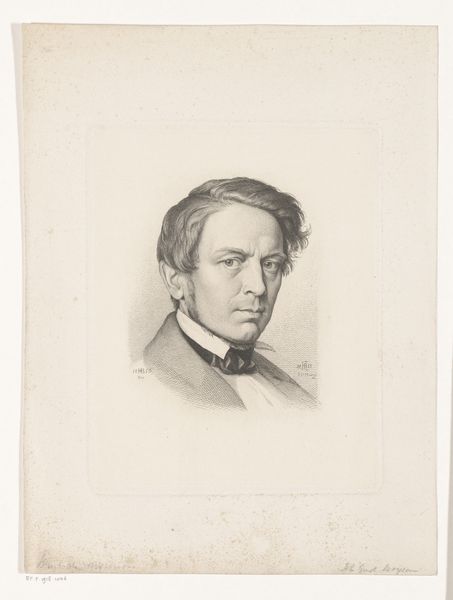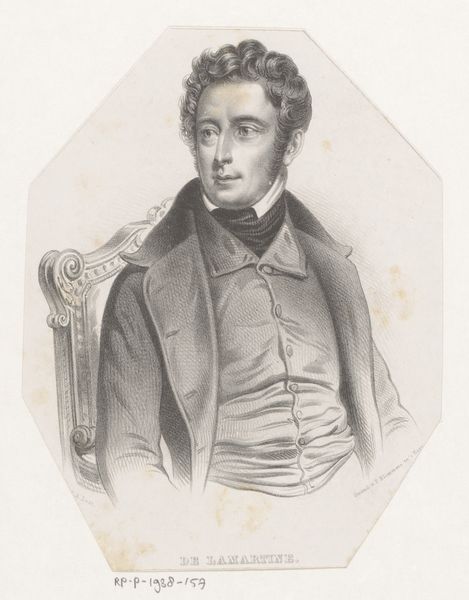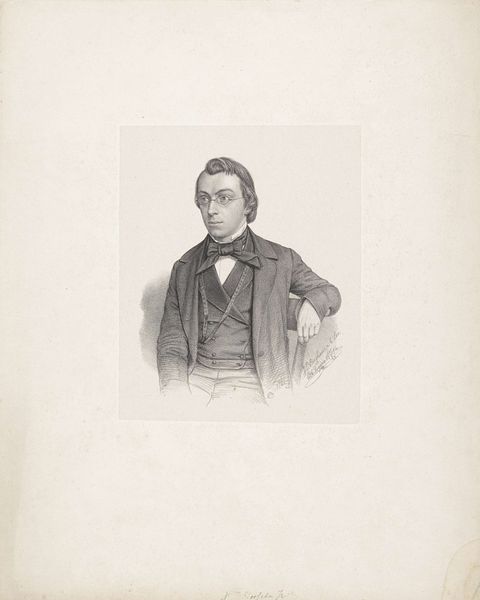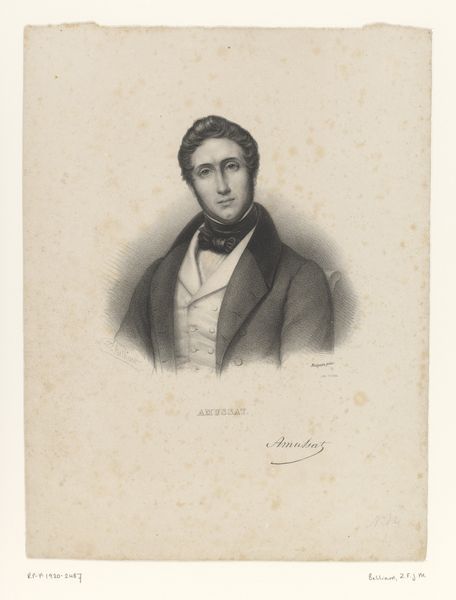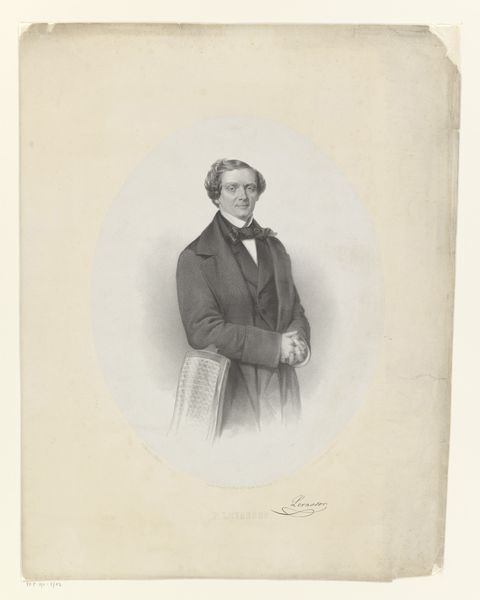
drawing, print, engraving
#
pencil drawn
#
drawing
# print
#
charcoal drawing
#
pencil drawing
#
romanticism
#
portrait drawing
#
engraving
#
realism
Dimensions: 150 mm (height) x 135 mm (width) (bladmaal)
Curator: The piece before us is titled "Portræt af Hostrup," created by Hans Peter Hansen in 1849. It's a drawing and engraving—a fascinating intersection of artistic techniques. What are your first thoughts? Editor: Stark and rather austere, yet somehow softened by the etching. It’s got a palpable weight of material process—you can sense the hand of the engraver shaping the plate. What can you tell me about the sitter himself, and his broader context? Curator: Christian Hostrup was a Danish priest and playwright, deeply influential in the national romantic movement. This portrait captures the quiet intensity of a man wrestling with faith and societal change, at a time when Denmark was defining its cultural identity. His image has become linked with his involvement in a movement seeking to shape and elevate the Danish language, culture and history through literature and art. Editor: I see that Romanticism manifesting itself here not so much in overt emotionalism but rather in the material act of its making, don't you think? Each line etched carries a certain social value: it took hours, perhaps days, to render. A mark of respect to this leading cultural figure! I’m curious about the social implications of image production. Curator: It's definitely worth noting the implications for representation. During this era, portraits served multiple functions. Not just recording physical appearances, but also constructing social identities. Consider the symbolism embedded in his clothing: a quiet symbol that still represents respectability and influence. Editor: You're absolutely right, of course. Thinking about those repeated lines and that etching process further, you are right: portraiture as social inscription. Even now, these choices can be seen in popular representations in Danish cinema and art. The careful construction of his image. Curator: And Hansen has offered us a powerful, if restrained, portrayal that transcends its medium. We can explore questions of what he actually contributed to social understanding and national understanding during his own lifetime and within the space of modern national theory. Editor: Indeed! What seems straightforward now becomes so deeply complicated when we unpack the material realities. These elements are all there.
Comments
No comments
Be the first to comment and join the conversation on the ultimate creative platform.
